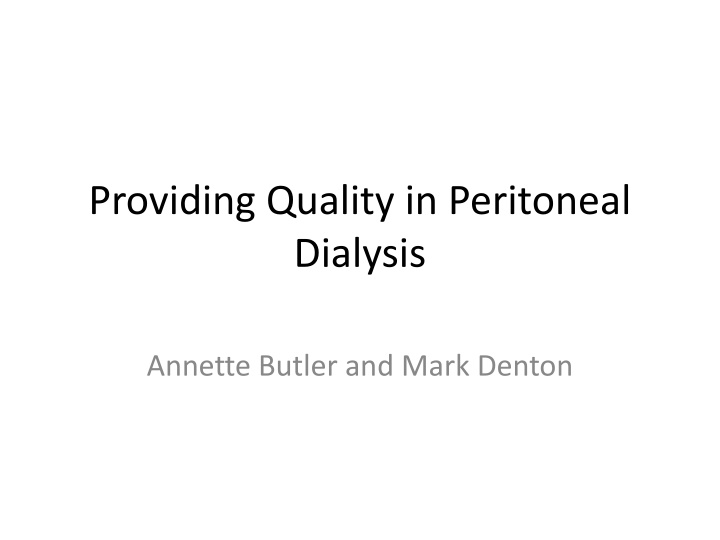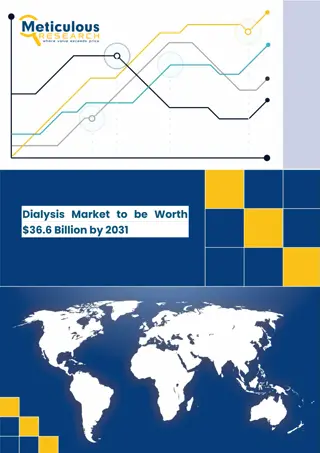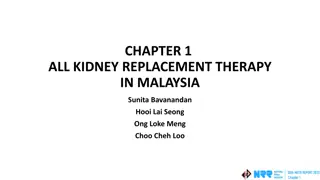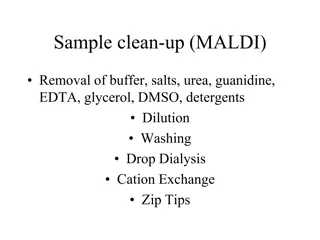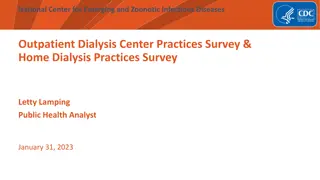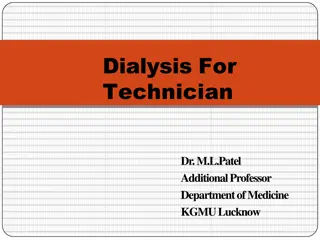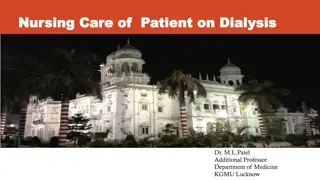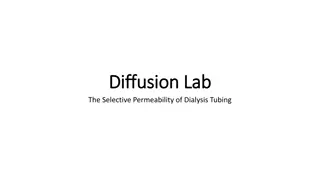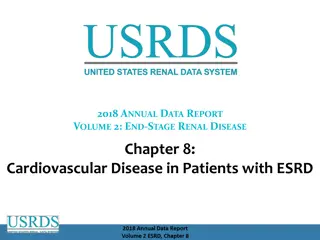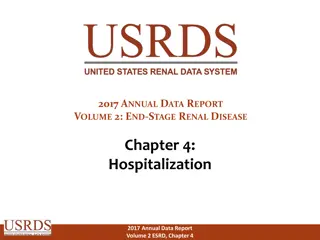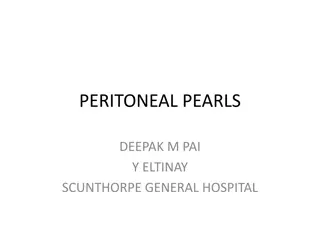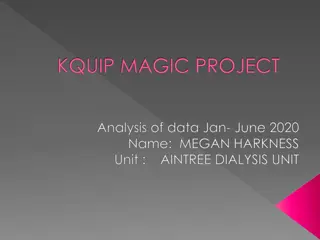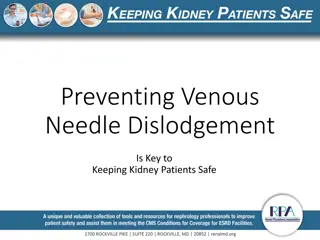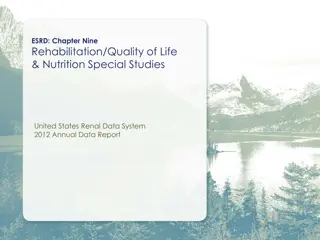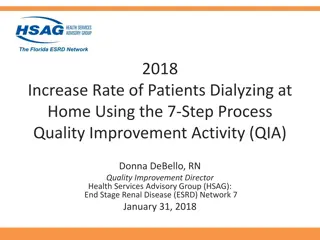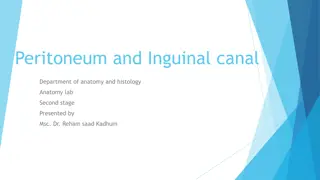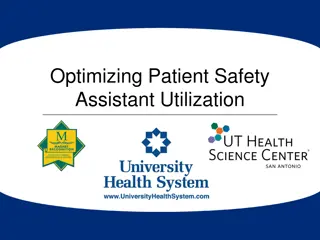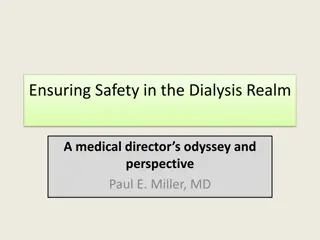Enhancing Peritoneal Dialysis Options for Improved Patient Outcomes
Ensuring quality in peritoneal dialysis by providing patients with the choice between PD and hemodialysis leads to a flexible lifestyle, preservation of renal function, and potentially fewer complications. Nephrologist placement of PD catheters using a percutaneous method under local anesthetic proves to be a feasible approach, enabling greater patient choice and increased PD utilization. The protocol involves patient preparation, catheter insertion, and post-procedural care with promising results so far.
Uploaded on Oct 06, 2024 | 1 Views
Download Presentation

Please find below an Image/Link to download the presentation.
The content on the website is provided AS IS for your information and personal use only. It may not be sold, licensed, or shared on other websites without obtaining consent from the author.If you encounter any issues during the download, it is possible that the publisher has removed the file from their server.
You are allowed to download the files provided on this website for personal or commercial use, subject to the condition that they are used lawfully. All files are the property of their respective owners.
The content on the website is provided AS IS for your information and personal use only. It may not be sold, licensed, or shared on other websites without obtaining consent from the author.
E N D
Presentation Transcript
Providing Quality in Peritoneal Dialysis Annette Butler and Mark Denton
Provision of quality involves provision of choice PD vs Haemodialysis
Peritoneal Dialysis allows for: A flexible lifestyle and independence No need for vascular access / needles Done at home / less travel Easy to do during vacations Often done during sleep
Contd Preserves native renal function Perhaps less need for fluid and dietary restriction Generally associated with fewer ups and downs
All too frequently patients are directed down haemodialysis pathway Crash landers Ease of placement of permcath vs PD catheter Worry about exposure of patient for general anaesthetic Less well developed PD service
Hypothesis Nephrologist placement of PD catheters using percutaneous method under local anaesthetic will enable greater choice and increase utilization of PD
Our data: 30 25 20 15 10 5 0 1 2013 2014 3 2015 2
Approx 60 in each group No difference in catheter survival or peritonitis rates No difference in complications such as Exit site leaks Primary or secondary drainage failure
What is our protocol Patients swabbed and decolonised if staph carriage Picolax sachet night before Day case Cefuroxime iv; Temazepam and tramadol premed Procedure performed and discharge that evening Dressing day 5; Sutures removed day 10 Aim for training 3 to 4 weeks post
Results Attempted 32 catheter insertions 5 failed attempts No complications of insertion Bowel perforation Bladder perforation
Reasons for failure 1st in patient with hx of miliary TB. GA insertion also failed 2nd and 3rd successful GA placement 4th discontinued due to complaints of pain Also failed GA insertion 5th attempted catheter reinsertion/manipulation Also failed GA manipulation
Successes 27 out of 32 successful catheter insertions 22 out of 27 started PD Total of 150 months of PD
Reasons for not starting PD 5 out of 27 not started PD 1 catheter removed after 6 months due to renal recovery 2 catheters placed in patients with CCF for ascites drainage 2 awaiting training
Infection rates 3 patients with peritonitis Staph epi Enterococcus MSSA Infection rate 1 every 38 months peritoneal dialysis No peritonitis occuring within one month of insertion One exit site infection (MSSA)
Other complication No exit site or midline incision PD leakage One patient has drainage problems 6 months after starting. Attempted manipulation failed. Now on HD One patient has pain on drainage corrected by tidal PD and use of physioneal
Patient Complexity Mean age: 54 (30 to 90) 4 previous transplant 2 had previous hysterectomy 1 had cholecystectomy 3 had PCKD
Summary We have established a nephrologist based service for PD catheter placement under local anaesthetic High success rate No complications Increase in PD patient numbers Enjoy the video!
